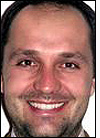Nov 28, 2006The Upper Austria University of Applied Sciences, in partnership with NXP Semiconductors, mobile operator Mobilkom Austria and the IT subsidiary of steelmaker Voestalpine, has launched a near-field communications (NFC) trial on the university's Hagenberg campus. The trial will focus on testing NFC-enabled electronic access and micro-payment systems, as well as peer-to-peer network services. Near-field communication utilizes short-range 13.56 MHz RFID technology to allow users to transmit information securely from one NFC device to another.
The Upper Austria University of Applied Sciences is a member of the NFC Forum. The nonprofit industry association was founded in 2004 by NXP, Nokia and Sony to promote the use of NFC short-range wireless interaction in consumer electronics, mobile devices and PCs.
The first phase of the NFC trial was launched in early November. Part of a two-year research project begun last fall, it was funded with €450,000 ($594,000) from the Austrian government and the sponsoring companies. About 100 students and university employees were asked to participate in exchange for a free NFC-enabled Samsung cell phone. The phone can be used as a reader or contactless smart card compatible with ISO 14443 A and B standards, or as a peer-to-peer device. NXP is providing the hardware for the project, while Mobilkom Austria is testing over-the-air payment functions and Voestalpine is defining and testing on-site security services and other applications that can improve processes.
As a contactless smart card, the mobile phone allows access to secured rooms and buildings. Users can also pay electronically at vending machines, snack bars and two campus cafeterias. When operating in peer-to-peer mode, the device connects to one of two NFC-enabled computers on campus, enabling students to download course schedules or menu plans to their devices.
Josef Langer, a professor of hardware and software systems engineering at the university, says the trial was the first live demonstration of peer-to-peer NFC services—that is, services rendered when two devices link directly to one another without intermediary devices or systems. The goal of the project, he explains, is to develop new NFC applications for process optimization, ticketing and payment.
Langer's team consists of 10 students, two full-time research assistants and a fellow professor, who will also test middleware components and security options for the NFC infrastructure. Together, they are developing hardware and working to integrate the NFC technology with the university's own Mifare-based systems. Mifare is NXP's 13.56 MHz contactless smart-card technology platform; the NFC standard supports the Mifare air-interface protocol. Roughly 1,100 students and 145 full- and part-time teachers at the Hagenberg campus already use Mifare-enabled ID cards to enter and exit more than 70 locations on campus. Now, the NFC phone can be used at these access points instead of the ID card.
As implementation of the trial commenced, the project team faced several hurdles getting the new NFC-based payment system to work with the existing infrastructure. "We needed defined interfaces that work together," Langer recalls, adding, "It was a challenge to design and implement a simple system that works." In addition, the project got off to a late start because the team first had to reconfigure the IT networks to avoid breaking any data security and privacy rules.


